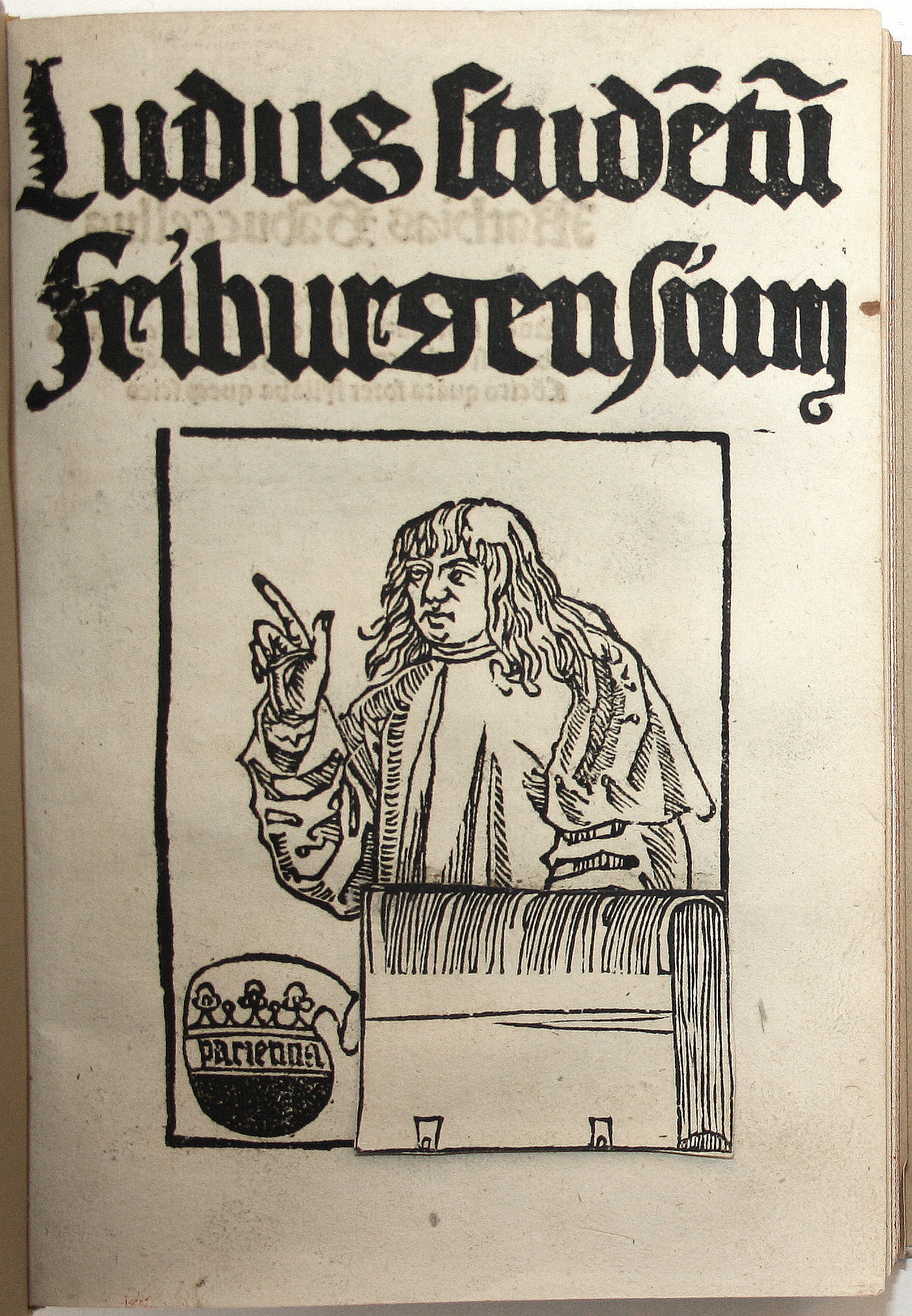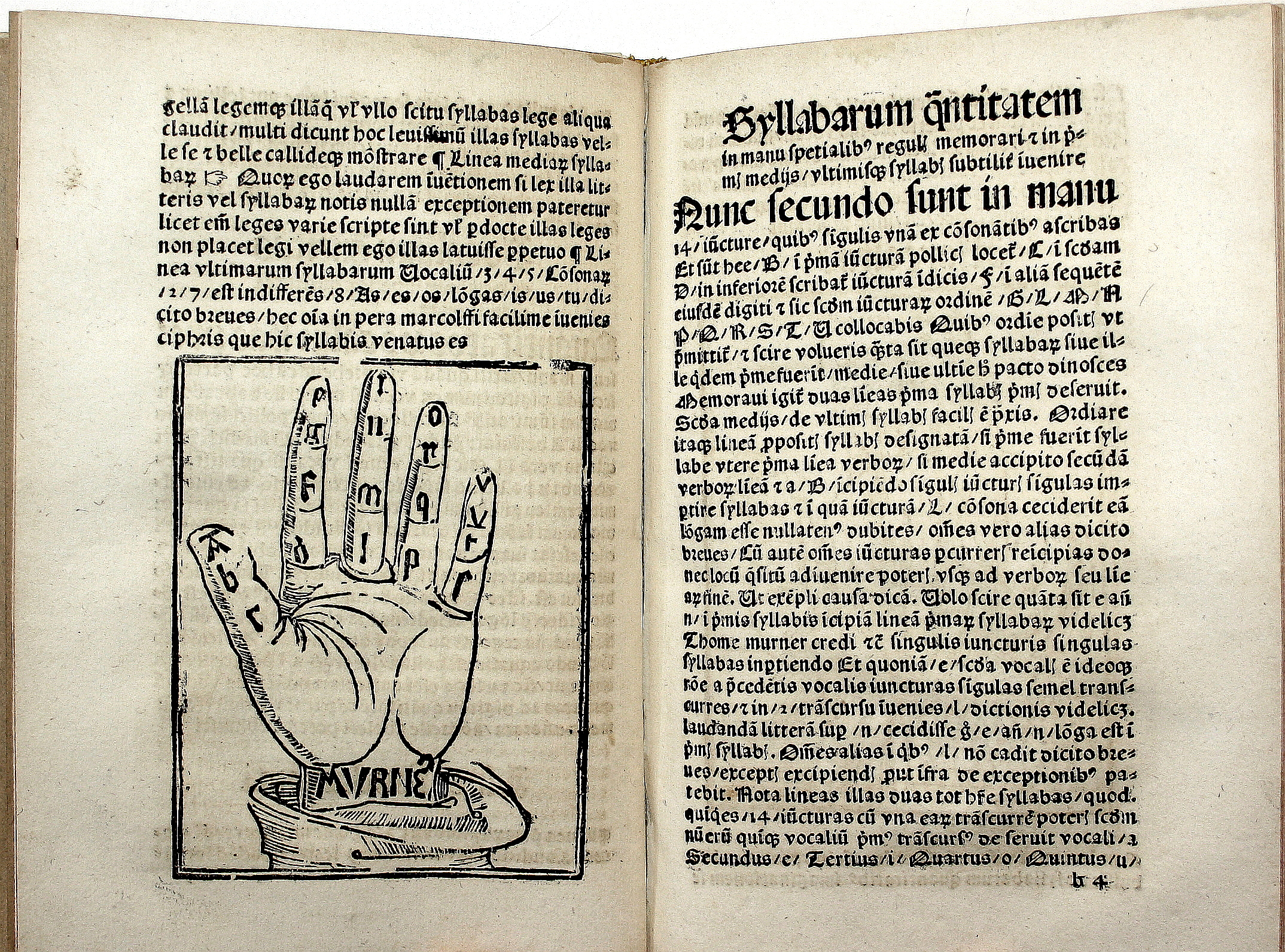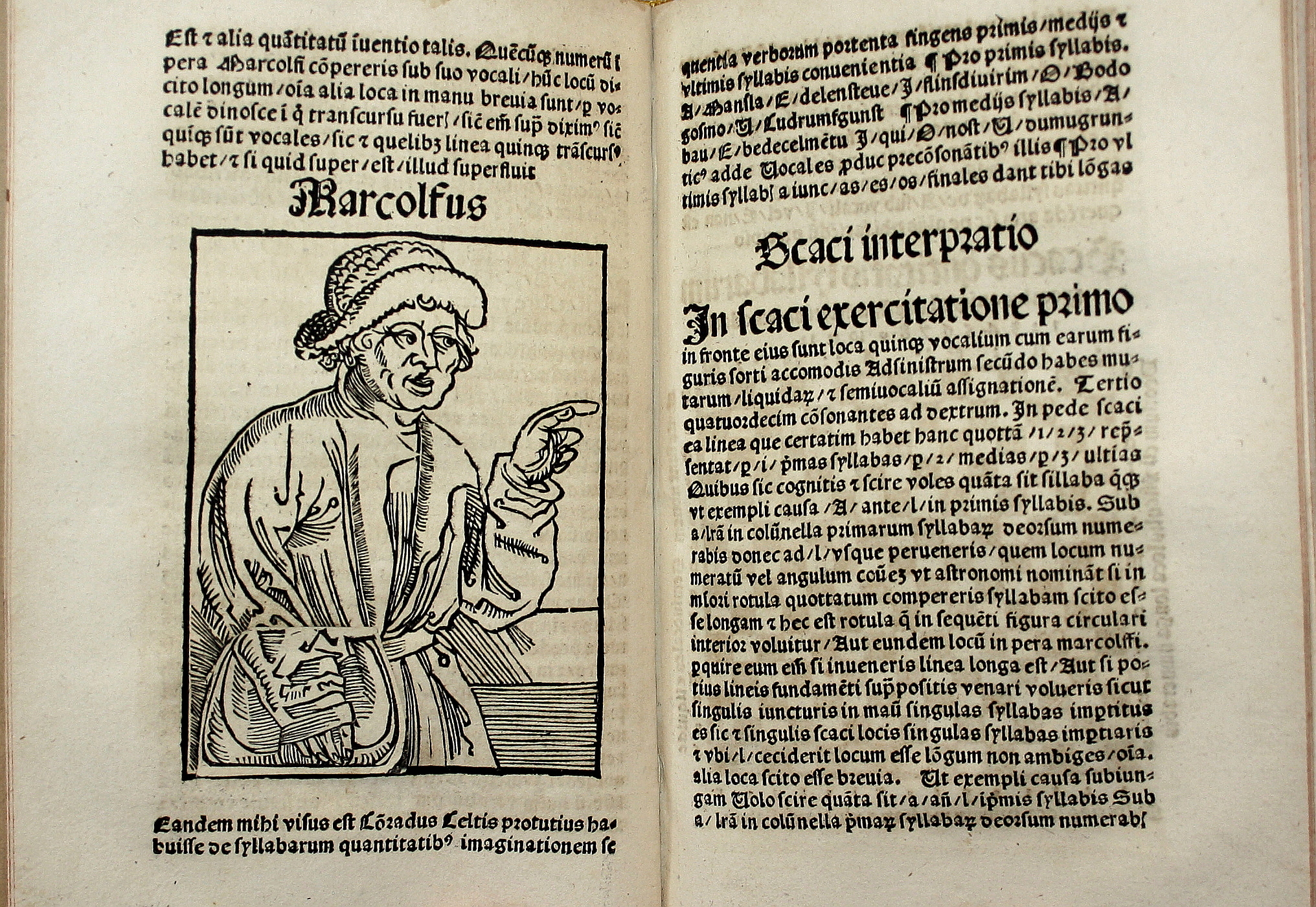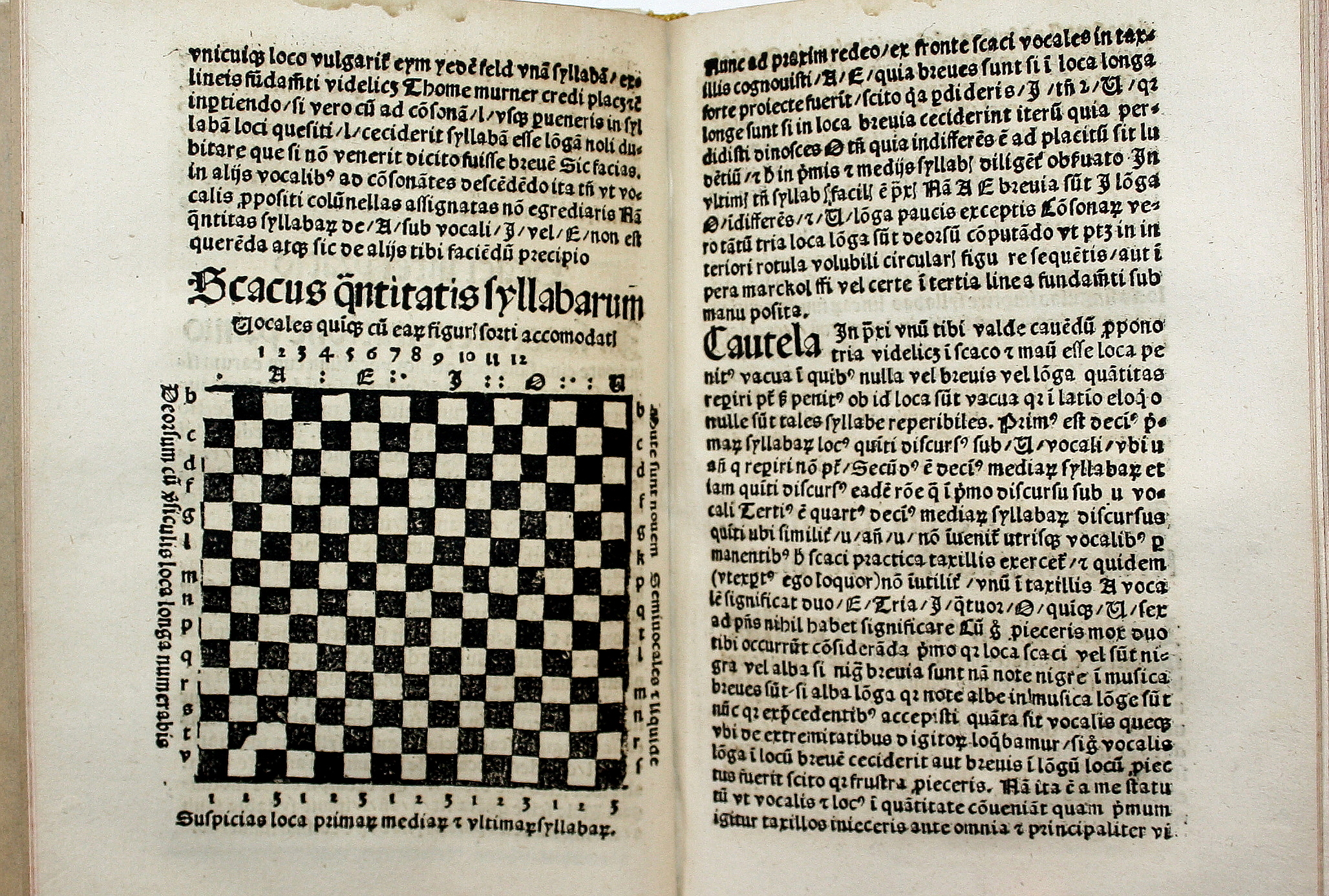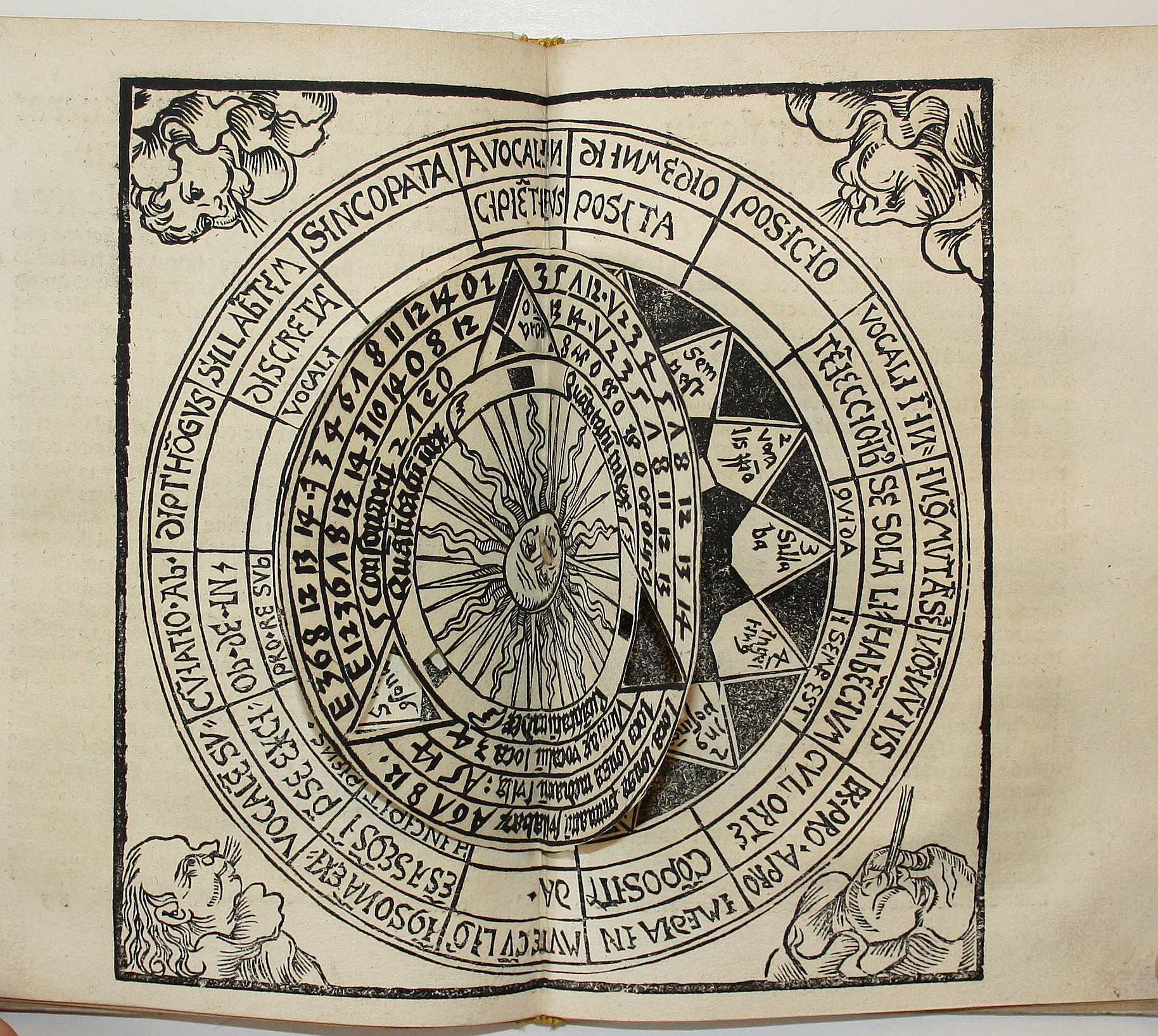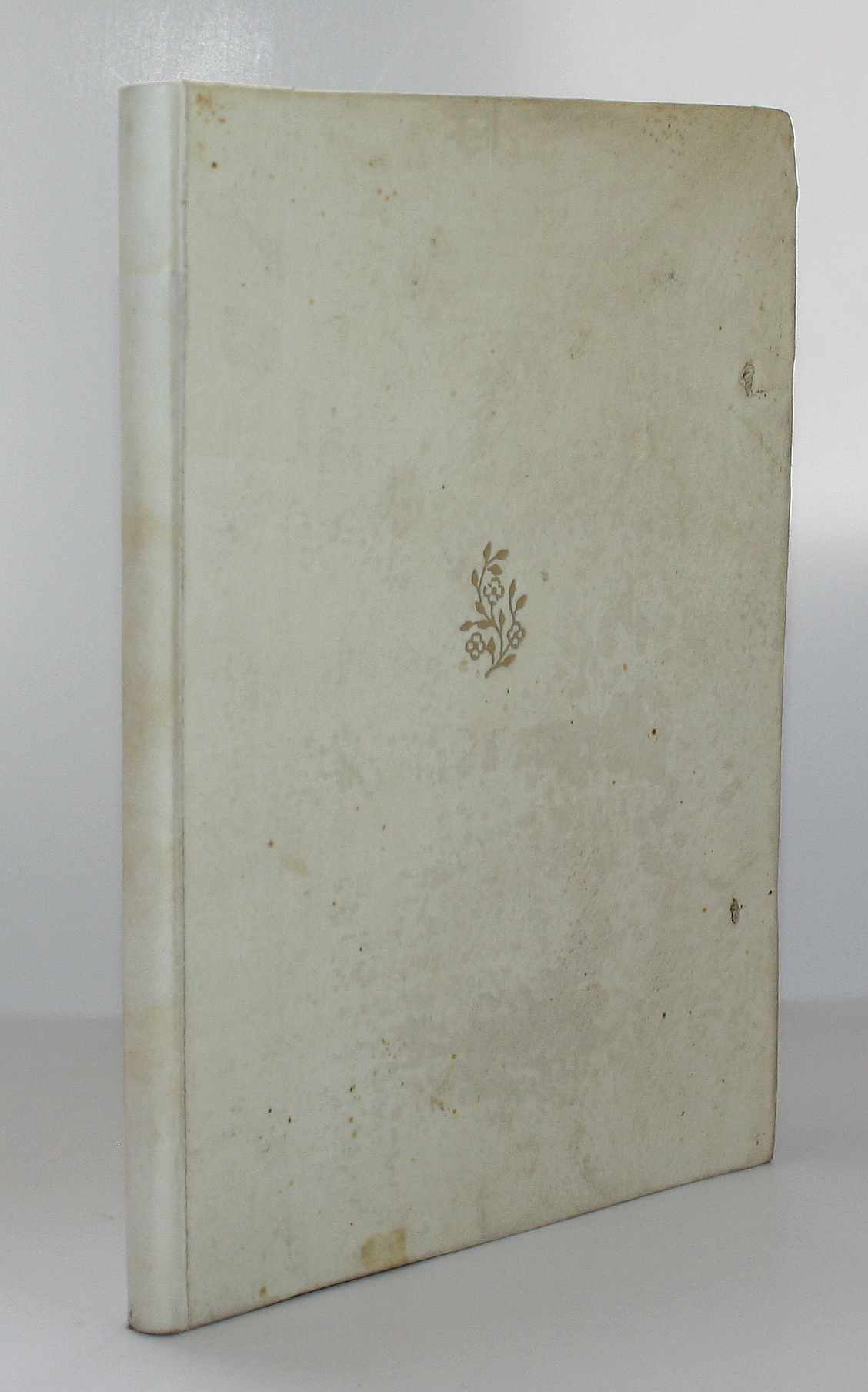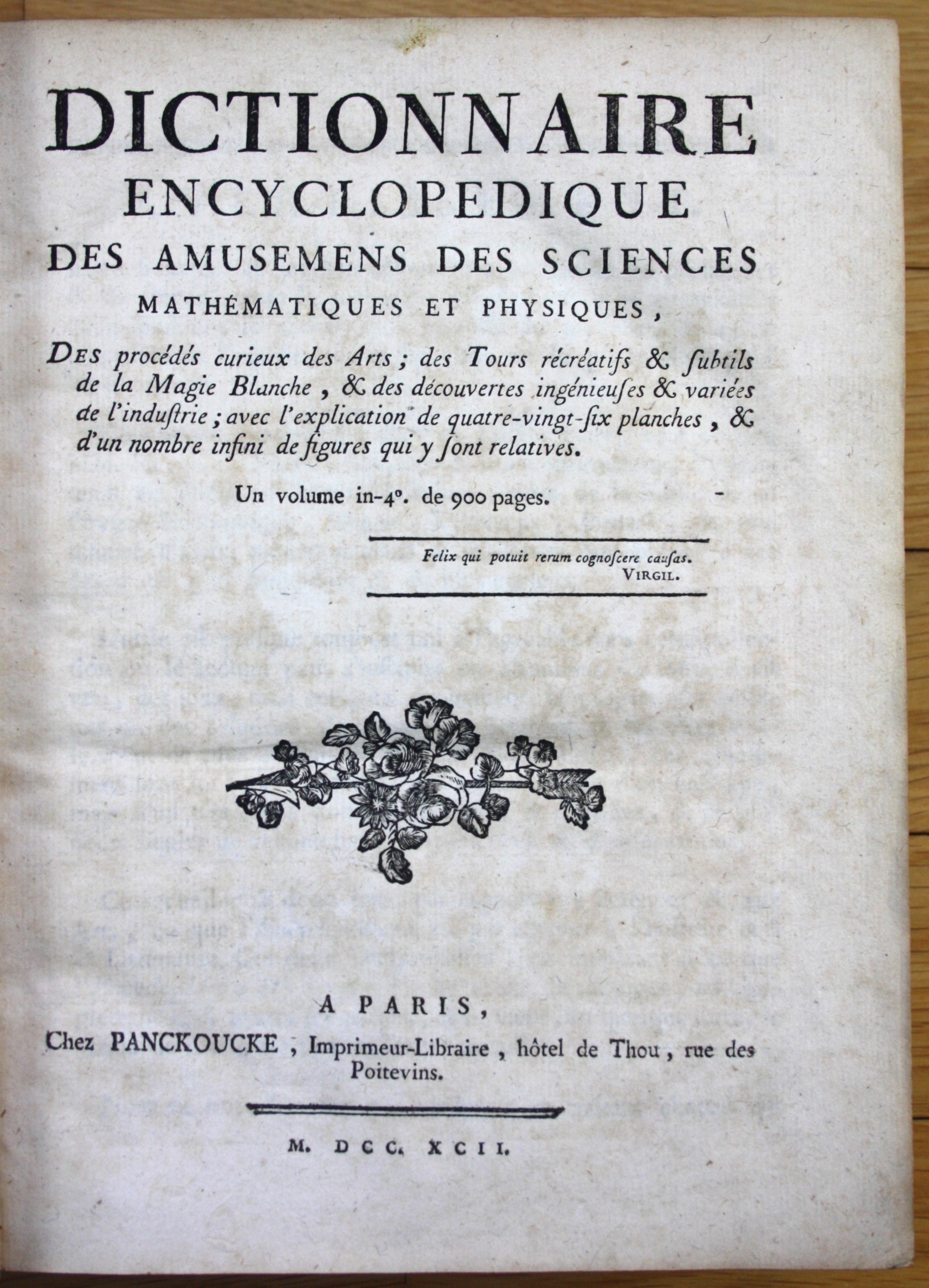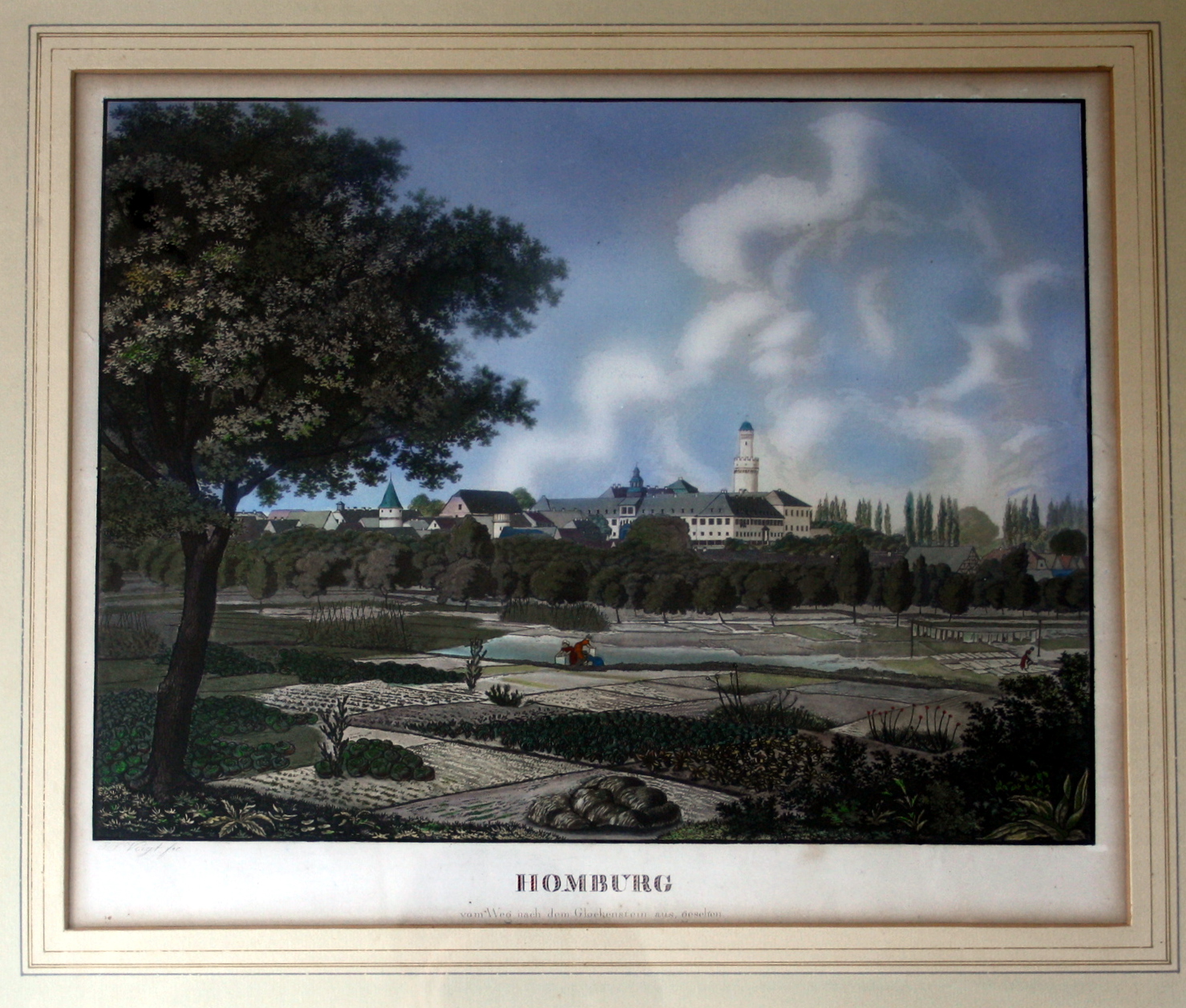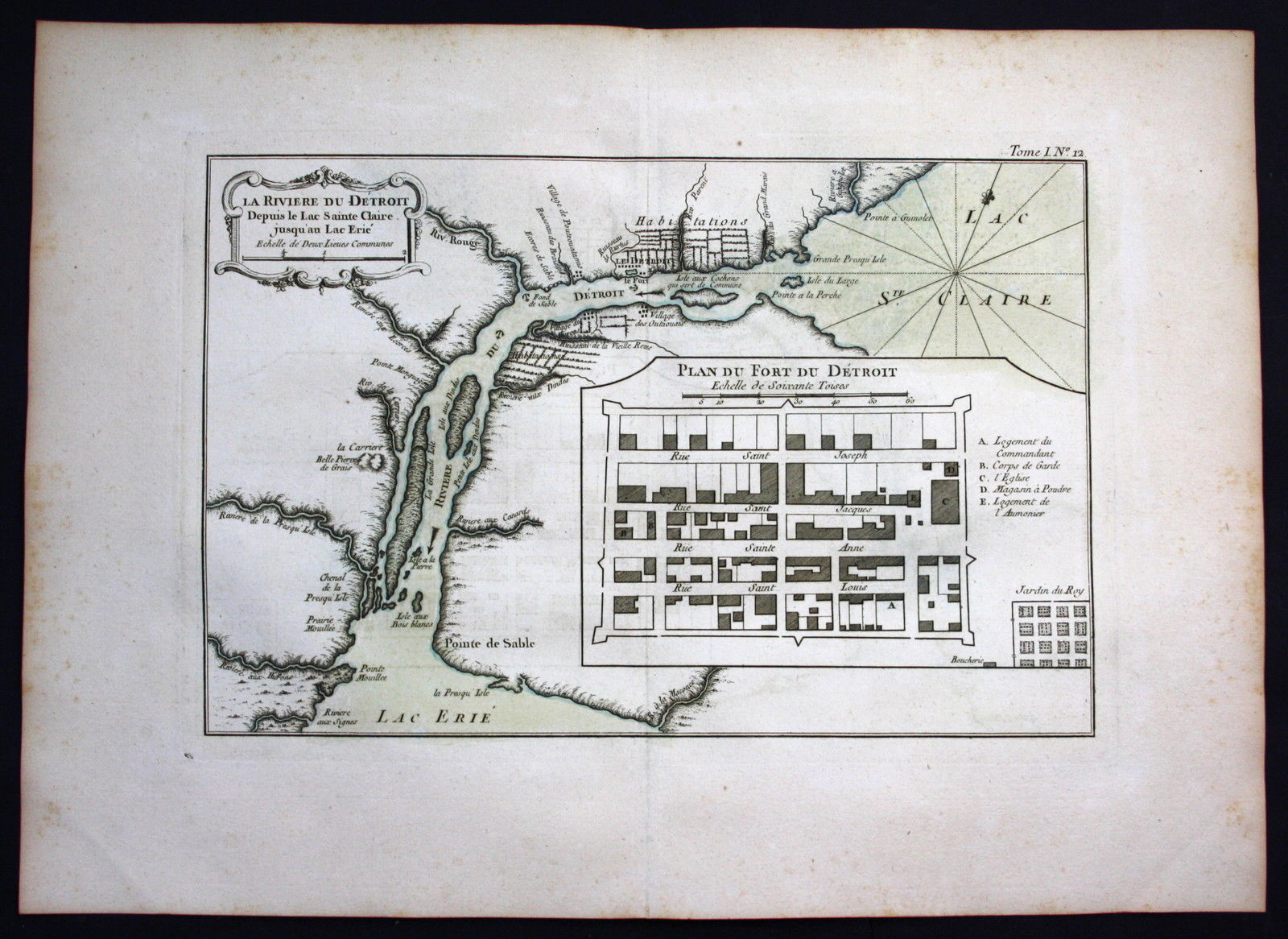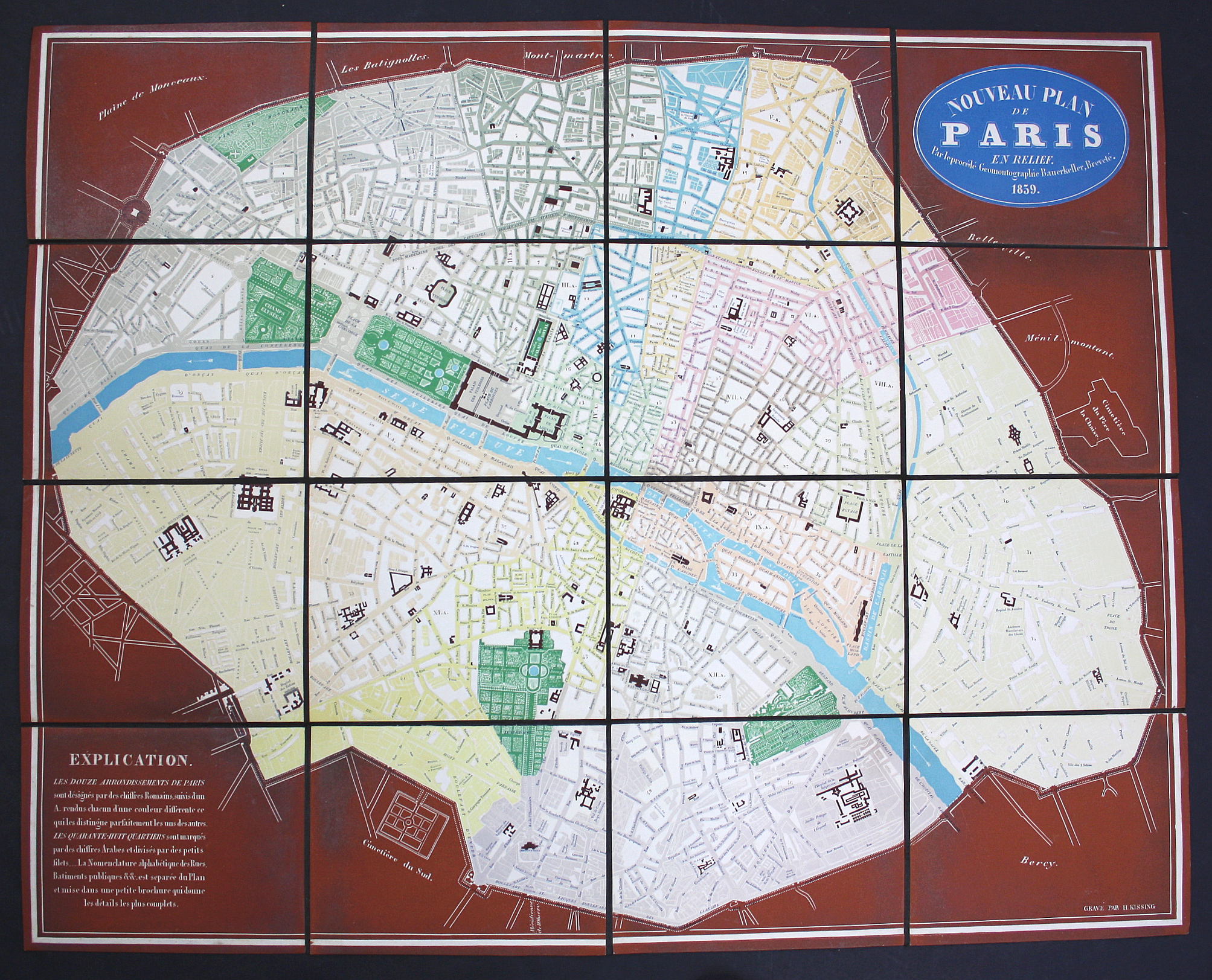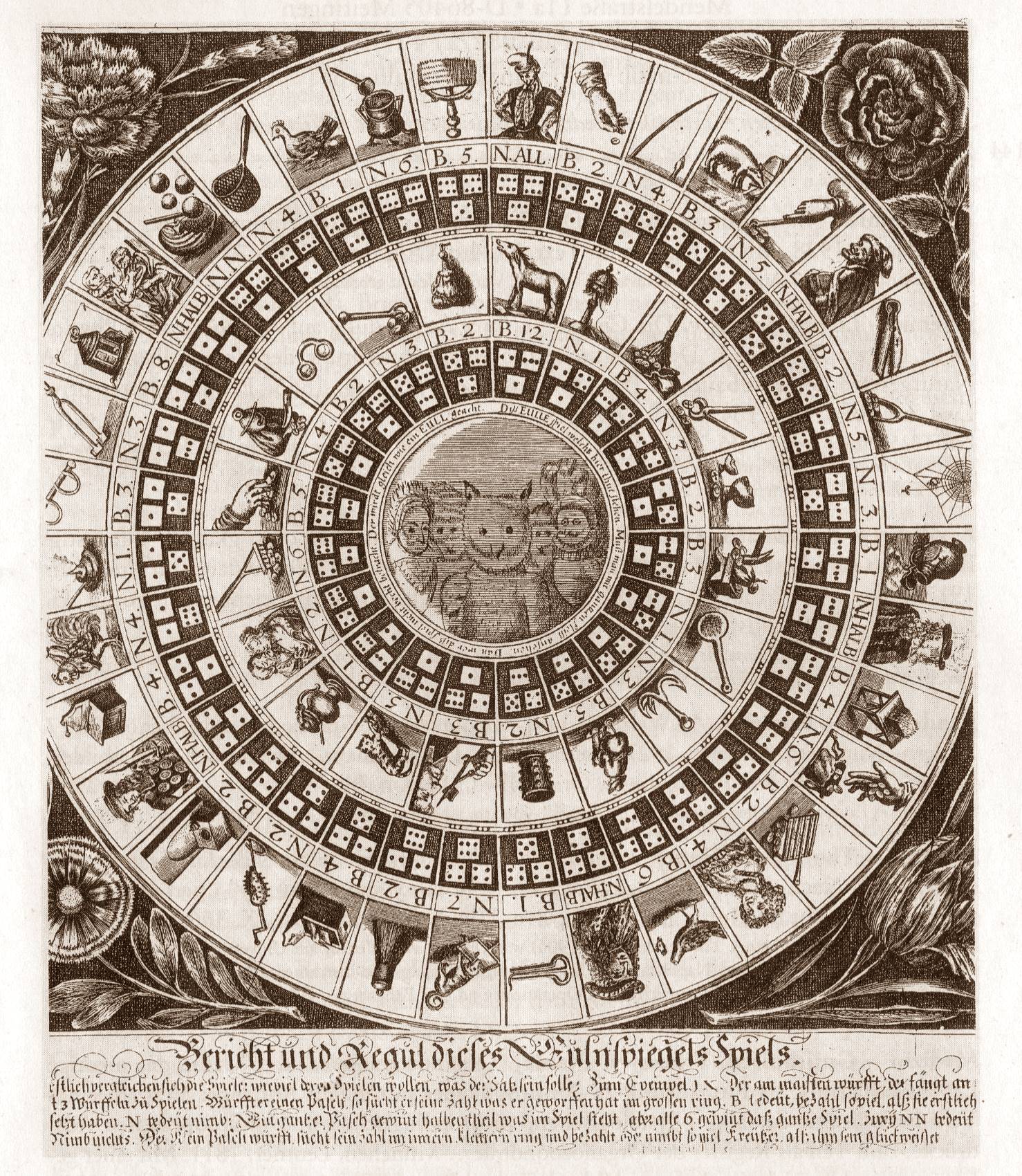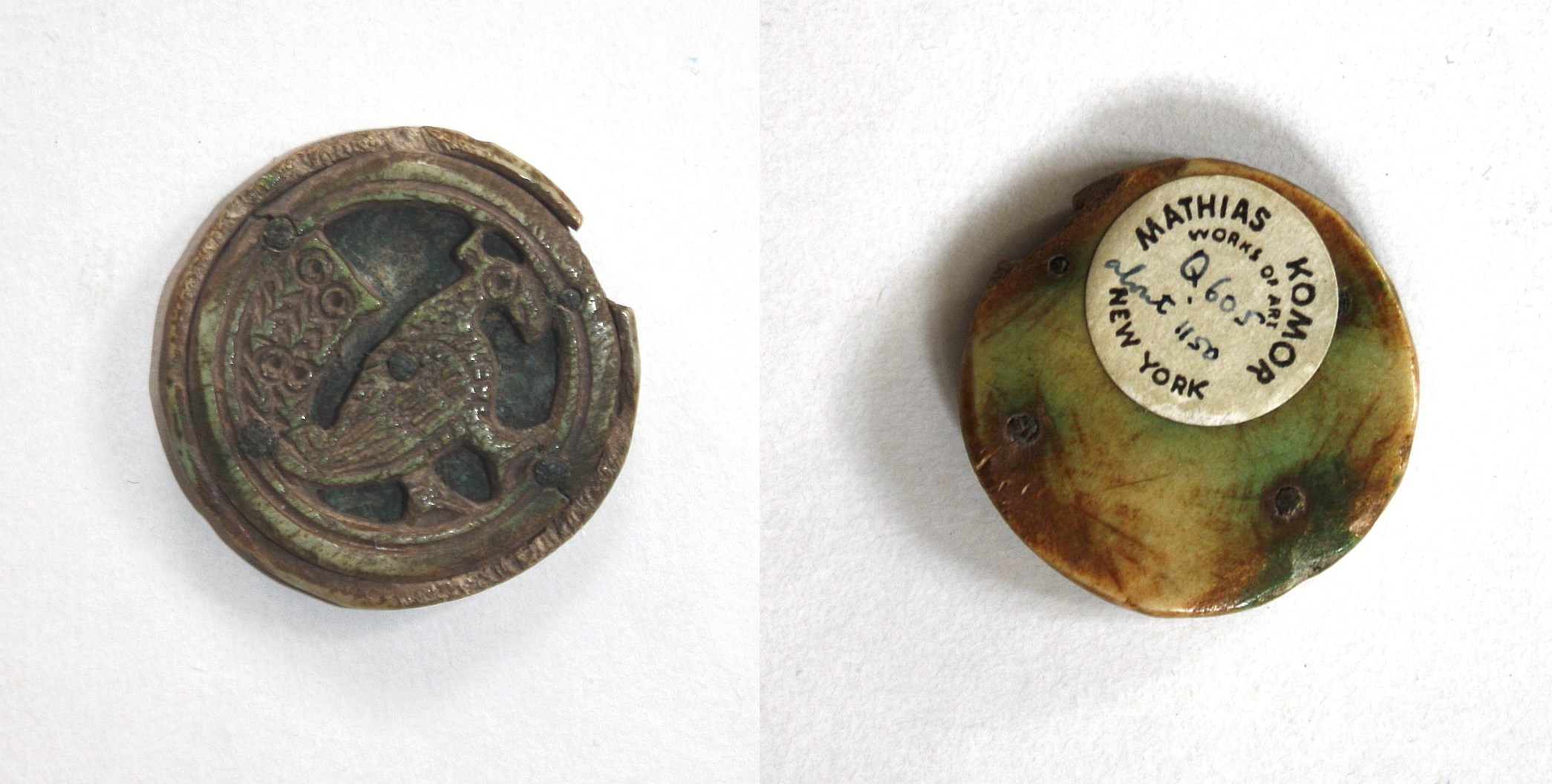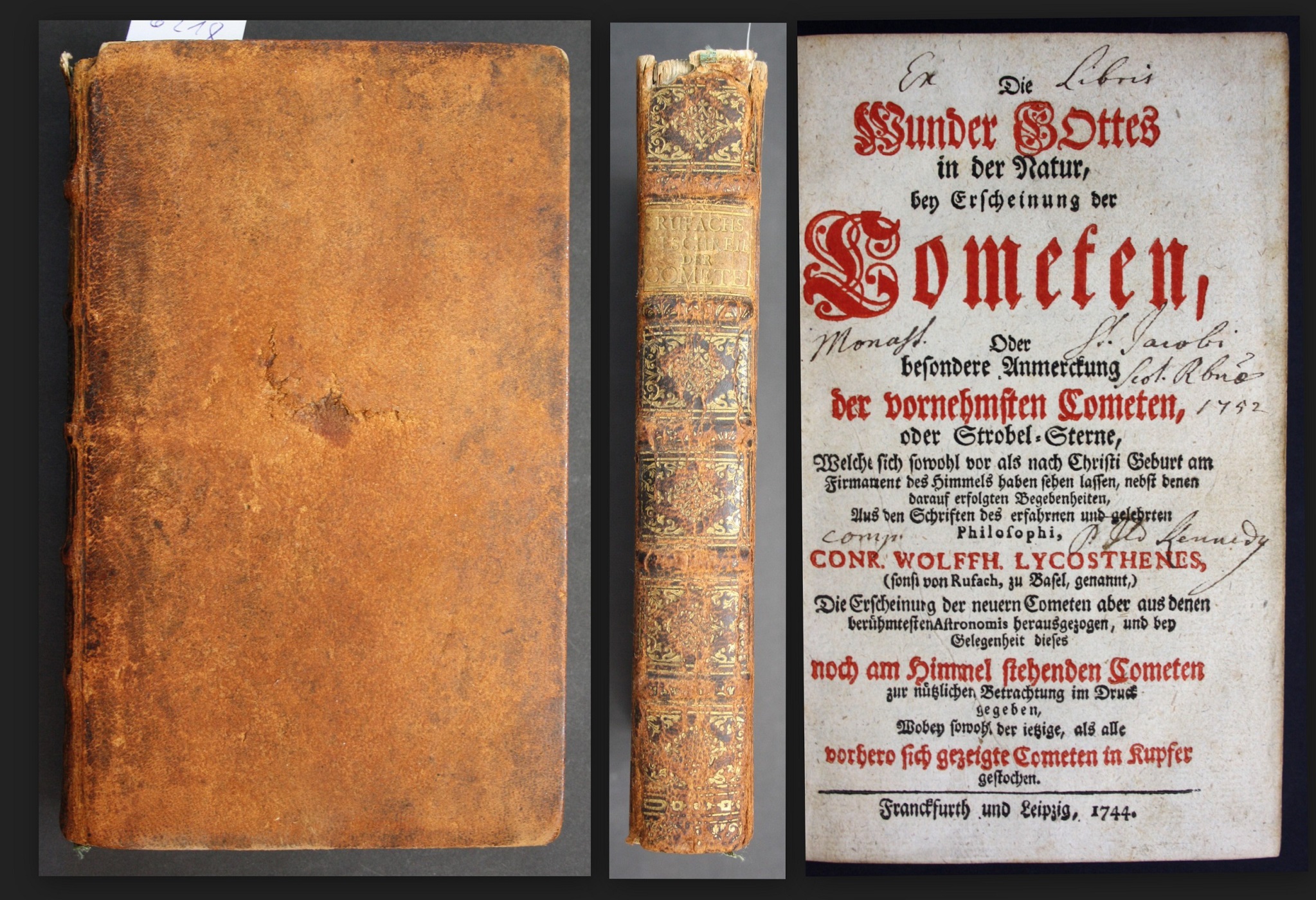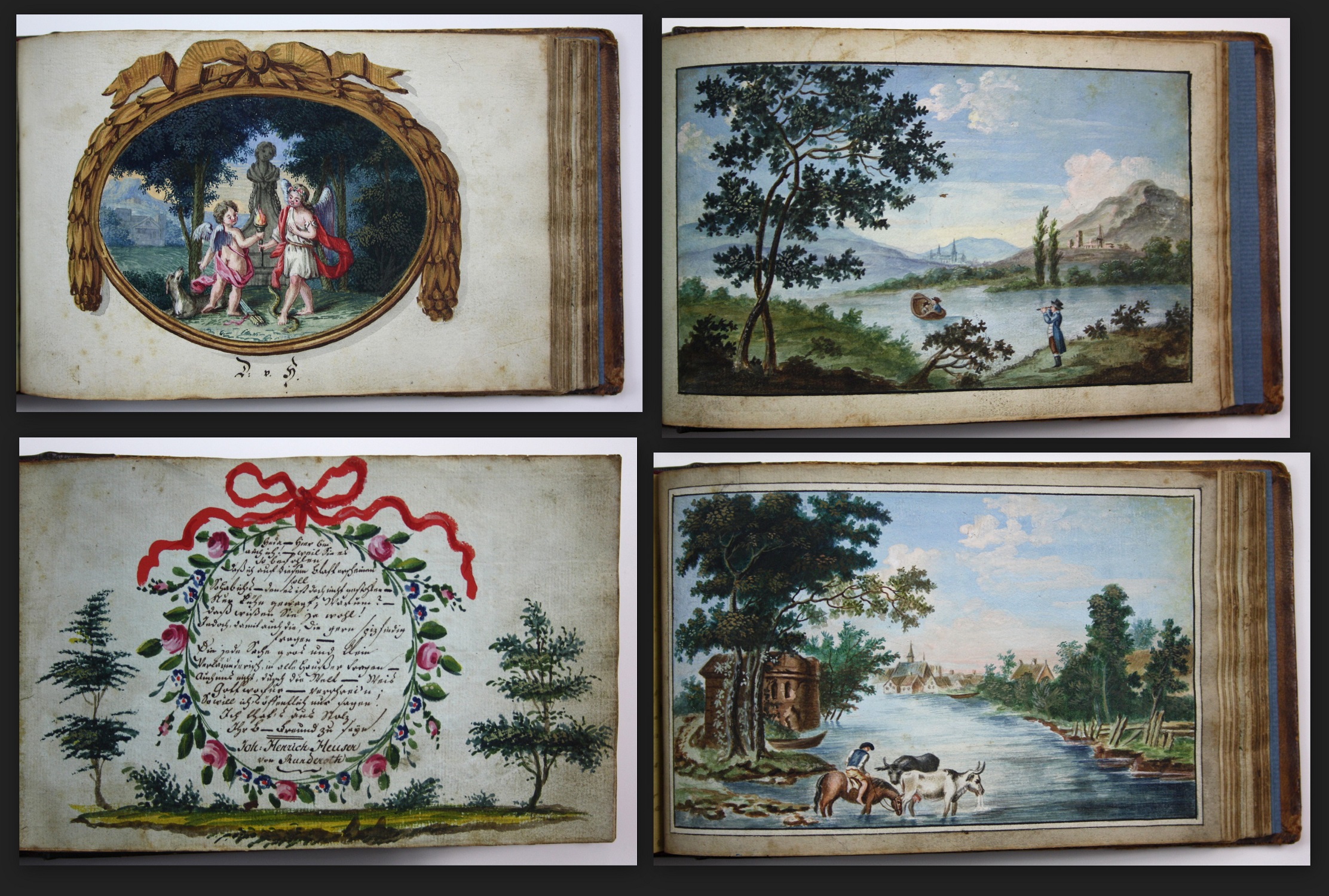MURNER, Thomas – Ludus studentum Friburgensium. Frankfurt am Main, Beatus Murner. 1511. 4to [binding 196 x 143 mm; textblock: 194 x 131 mm]. Vellum binding mit golden ornament on the front cover. With 10 woodcuts, out of which one is a rotating Volvelle and 2 are expandable woodcuts.
Being in the close vicinity of Mainz, where the Gutenberg Bible was printed in 1455, it seems a rather late development that the first book in Frankfurt was printed only fifty-six years later. The book is significant in several fields. It is not only the first printed book in Frankfurt am Main, but also one of the first printed movable books and most probably the first book using flaps. It also incorporates Murners famous circular board game. It is the first time in history that a printed board game was used as a tool for educational purposes and so paving the way for the later so popular goose games.
Thomas Murner is today considered the inventor of educational games. He was one of Luther’s most fervent opponents, as well as the most gifted German satirist of the 16th century. Avid traveller, Murner studied and later taught in some of the greatest universtities in Europe, arriving in Frankfurt in 1511 together with his brother Beatus. In 1507, while teaching in Krakow, Murner designed an innovative set of playing cards (Chartiludium logice), meant to help students memorize aspects of logic. His method was not well received by fellow lawyers in Krakow, when applied to jurisprudence. It drew so much attention to Murner and the success of his educational method, that he was accused of using sorcery and magic in teaching his students.
Murner’s learning techniques described in the present book are all directed at memorizing elements of Latin prosody and metrics, by means of different games. In the case of the wheel of fortune boardgame, players were meant to provide different rules or examples of the respective assigned space, such as „positio“, „diphtongus“ or even different exceptions to rules. Other games included in the book are chess and tric-trac – the ancestor of backgammon. Sondheim claims that Beatus had created the woodcuts, but it may also be that Thomas himself made them.
There are two other undated editions of Murner’s educational games sometimes regarded as earlier printed. The Bavarian state library owns the only known copy of an undated broadside Scacus infallibus quantitatis syllabarum, and another undated 10-page volume titled De sillabarum quantitatibus: et arte carminandi facilima praxis… (Basle, Michael Furter) is owned in a single known copy by the Freiburg library. Sondheim believed that these two prints constitute a starting point for Murner’s present Ludus Studentum…, but according to their more advanced structures of the games the present book was most probably printed first.
WorldCat lists only 5 copies worldwide, the majority of them damaged or incomplete. The Cotsen copy (Princeton library) has the movable volvelle glued to the page, thus incomplete in its functioning. The copies in Munich (BSB), Oxford (Bodleian Library) and the British Library lack the volvelle. Only the University and State Library of Saxony-Anhalt in Halle owns another complete copy. Not even Frankfurt owns a copy of the first book printed there.
This is the third complete copy known and the last copy to be privately owned.
4to [Einband 196 x143 mm; Buchblock 194 x 131 mm].
Pergament mit vergoldetem Ornament auf Vorderdeckel. Mit 10 Holzschnitten, darunter 1 drehbare Volvelle und 2 aufklappbare Holzschnitte.
Sehr gut erhaltenes Exemplar. In dieser Erhaltung einmalig.
Trotz der geographischen Nähe zu Mainz, wo bereits 1455 die Gutenberg-Bibel gedruckt wurde, ist es verwunderlich, dass erst 56 Jahre später der Buchdruck in Frankfurt am Main Einzug hielt. Vorliegendes Werk ist das erste in Frankfurt am Main gedruckte Buch. Es ist eines der ersten gedruckten beweglichen Bücher und wahrscheinlich das erste Buch mit Teilen zum aufklappen. Es enthält zudem Murners berühmtes Brettspiel. Zum ersten Mal in der Geschichte des Buchdrucks wurde hier ein Brettspiel für Bildungszwecke entwickelt und ebnete damit den Weg für die bis heute so beliebten Gänsespiele.
Der Autor Thomas Murner gilt heute als einer der frühesten Erfinder von Lernspielen. Er war einer der leidenschaftlichsten Gegner Martin Luthers und der begabteste deutsche Satiriker des 16. Jahrhunderts. Murner, ein begeisterter Reisender, studierte und lehrte später an einigen der größten Universitäten Europas und kam 1511 zusammen mit seinem Bruder Beatus nach Frankfurt. Im Jahr 1507 entwarf Murner, während er in Krakau unterrichtete, ein Kartenspiel (Chartiludium logice), das den Schülern helfen sollte, Aspekte der Logik auswendig zu lernen. Seine Methode wurde von Juristen in Krakau nicht gut aufgenommen. Murner wurde vorgeworfen, seine Schüler mit Zauberei und Magie zu unterrichten.
Murners Lehrmethoden, welche in diesem Buch beschrieben werden, zielen darauf ab, Elemente der lateinischen Prosodie und Metrik anhand verschiedener Spiele auswendig zu lernen. Im Falle des Glücksbrettspiels sollten die Spieler andere Regeln oder Beispiele für den jeweils zugewiesenen Raum angeben, wie „Positio“, „Diphtongus“ oder sogar unterschiedliche Ausnahmen von Regeln. Andere Spiele, die in dem Buch enthalten sind, sind Schach und Trictrac – der Vorgänger von Backgammon. Sondheim behauptet, dass Beatus die Holzschnitte erstellt habe, aber es könnte auch sein, dass Thomas sie selbst geschnitten hat.
Es gibt zwei weitere undatierte Ausgaben von Murners Lernspielen. Die Bayerische Staatsbibliothek besitzt das einzige bekannte Exemplar eines undatierten Einblattdruckes Scacus infallibus quantitatis syllabarum, und ein weiteres, nicht datiertes, 10-seitiges Buch mit dem Titel De sillabarum quantitatibus: et arte carminandi facilima praxis … (Basel, Michael Furter) ist in einem einzigen bekannten Exemplar im Besitz der Freiburger Bibliothek. Sondheim glaubte, dass diese beiden Drucke Vorläufer für Murners vorliegendes Werk Ludus Studentum darstellen, aber aufgrund ihrer fortgeschritteneren Spiel-Strukturen, kann davon ausgegangen werden, dass das vorliegende Buch höchstwahrscheinlich zuerst gedruckt wurde.
WorldCat listet weltweit nur 5 Exemplare in Bibliotheken auf, von denen die meisten beschädigt oder unvollständig sind. Beim Cotsen-Exemplar (Princeton-Library) wurde die bewegliche Volvelle auf die Seite geklebt und ist daher in ihrer Funktion unbrauchbar. Bei den Exemplaren in München (BSB), Oxford (Bodleian Library) und der British Library fehlt die Volvelle. Nur die Universitäts- und Landesbibliothek Sachsen-Anhalt in Halle besitzt ein weiteres vollständiges Exemplar. Nicht einmal Frankfurt besitzt ein Exemplar des ersten dort gedruckten Buches.
Dies ist das dritte bekannte vollständige Exemplar und das letzte, welches sich in Privatbesitz befindet.
Bibliography: BL 8355.c.28.; Bodleian Douce M 693; OCLC 165561654; VD 16 / M7039; USTC 673647; Sophie Caflisch – Spielend lernen. Spiel und Spielen in der mittelalterlichen Bildung. Ostfilder, 2018; Thomas Murner. 1475-1537, Karlsruhe, 1987; Moritz Sondheim – Gesammelte Schriften. Frankfurt am Main, 1927.
sold / verkauft




